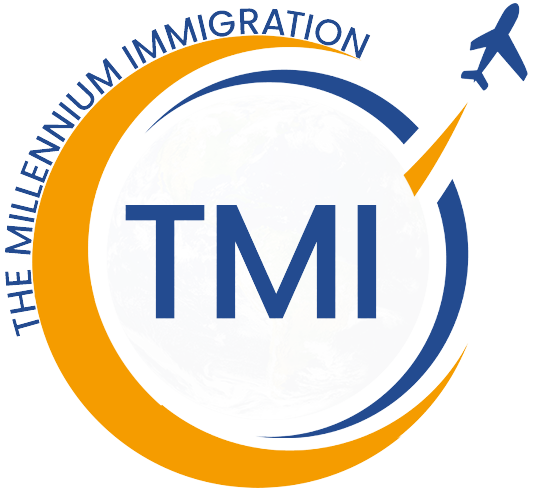- 1011 Parsons Road SW, Edmonton, AB T6X 0X2 - CANADA

- Office # 6, Second Floor, Blook-D, Spring North Commercial, Phase-7, Bahria Town, Islamabad

1011 Parsons Road SW, Edmonton, AB T6X 0X2 - CANADA
Office # 6, Second Floor, Blook-D, Spring North Commercial, Phase-7, Bahria Town, Islamabad
1011 Parsons Road SW, Edmonton, AB T6X 0X2 - CANADA

Office # 6, Second Floor, Blook-D, Spring North Commercial, Phase-7, Bahria Town, Islamabad


THE MILLENNIUM IMMIGRATION
FROM HOPE TO REALITY
FREE ASSESSMENT

A New Opportunity for Immigrants in Rural Canada
Canada has unveiled a groundbreaking Rural Immigration Pathway to support economic growth and population retention in small and remote communities. This initiative aims to attract skilled foreign workers to address labor shortages while promoting sustainable development in rural areas.

What is the Rural Immigration Pathway?
The Rural Immigration Pathway is a tailored immigration program designed to facilitate the transition of skilled immigrants to permanent residence in Canada. This initiative builds on the success of the Rural and Northern Immigration Pilot (RNIP) and seeks to create a seamless immigration process for workers looking to settle in less densely populated areas.
The program focuses on:
- Addressing labor market gaps in rural Canada
- Encouraging long-term settlement outside major metropolitan areas
- Strengthening local economies with skilled professionals
- Providing pathways to permanent residence for eligible candidates
Participating Communities in Canada
The government has identified specific participating communities that will benefit from this initiative. These communities have demonstrated a need for skilled labor and a strong local support system to integrate new immigrants successfully.
The participating regions include:
- British Columbia: Vernon, West Kootenay, and Prince George
- Alberta: Grande Prairie, Brooks, and Fort McMurray
- Saskatchewan: Moose Jaw, Swift Current, and Yorkton
- Manitoba: Brandon, Morden, and Portage la Prairie
- Ontario: North Bay, Timmins, Sudbury, and Thunder Bay
- Atlantic Canada: Communities in Nova Scotia, New Brunswick, and Newfoundland and Labrador
These locations have been carefully chosen based on labor market demand, community readiness, and long-term retention potential.
Eligibility Criteria for the Rural Immigration Pathway
To qualify for this program, applicants must meet specific eligibility requirements, including:
- Work Experience: A minimum of one year of continuous full-time work experience in an eligible occupation
- Job Offer: A valid job offer from an employer in one of the participating communities
- Language Proficiency: Meeting the required Canadian Language Benchmark (CLB) levels
- Educational Credentials: Holding an education equivalent to a Canadian secondary school diploma or higher
- Settlement Funds: Demonstrating financial stability to support initial settlement
- Intent to Reside: A strong commitment to live and work in the selected community
How to Apply for Permanent Residence
The application process involves several key steps:
- Obtain a Job Offer – Secure employment with a designated employer in one of the participating communities.
- Community Recommendation – Receive an endorsement from the local economic development organization.
- Submit an Immigration Application – Apply for permanent residence through Immigration, Refugees, and Citizenship Canada (IRCC).
- Processing & Approval – Once approved, applicants can settle in their designated rural community.

Benefits of the Rural Immigration Pathway
For Immigrants:
- Faster Processing Times – The government prioritizes applications from skilled workers willing to settle in rural areas.
- Permanent Residency Pathway – A direct route to obtaining Canadian PR status.
- Affordable Living – Lower cost of living compared to major cities like Toronto or Vancouver.
- Community Support – Access to settlement services, language training, and integration programs.
For Rural Communities:
- Workforce Growth – Filling essential job vacancies in healthcare, agriculture, manufacturing, and hospitality sectors.
- Economic Development – Boosting local businesses and increasing consumer spending.
- Population Growth – Encouraging long-term residency and preventing workforce shortages.
Challenges and Solutions
While the initiative presents significant opportunities, challenges remain in ensuring retention and integration. Some of the key concerns include:
- Limited Housing Availability – Investments in infrastructure and affordable housing are crucial.
- Access to Services – Enhancing healthcare, education, and public transportation in remote areas.
- Cultural Integration – Promoting community engagement programs for newcomers.
To address these challenges, the government works closely with local authorities, employers, and settlement agencies to create a supportive environment for immigrants.
Why This Initiative is a Game Changer
Canada’s commitment to rural immigration marks a significant step toward balanced population growth and economic sustainability. By facilitating skilled labor migration to rural areas, the country is ensuring that all regions benefit from immigration-driven economic contributions.
This initiative is not just about addressing labor shortages—it is about building vibrant, diverse, and sustainable communities across Canada.

Conclusion
The Rural Immigration Pathway represents a transformative approach to addressing labor shortages and fostering economic growth in rural Canada. By connecting skilled workers with opportunities in smaller communities, this program not only benefits immigrants seeking a new home but also strengthens local economies. As Canada continues to embrace immigration as a cornerstone of its development strategy, initiatives like these will play a crucial role in shaping a prosperous and diverse future for the nation.
FAQ’s
Who is eligible for the Rural Immigration Pathway?
Applicants must have at least one year of relevant work experience, a valid job offer from a designated employer in a participating community, meet the required language proficiency, and have sufficient settlement funds.
How long does the application process take?
Processing times vary depending on the number of applications and individual circumstances, but the government aims to prioritize applications under this program.
Do I need a job offer to apply?
Yes, a valid job offer from an employer in a participating community is mandatory for eligibility.
What types of jobs are available under this program?
Eligible occupations include healthcare, agriculture, manufacturing, hospitality, and skilled trades.
Can my family accompany me to Canada under this program?
Yes, successful applicants can include their spouse and dependent children in their application for permanent residence.
What happens after I receive permanent residence?
Once granted permanent residence, you are expected to live and work in the community that nominated you. However, as a PR holder, you have the right to move anywhere in Canada.
Is there financial support available for newcomers?
Many participating communities offer settlement services, including language training, job placement assistance, and financial guidance.